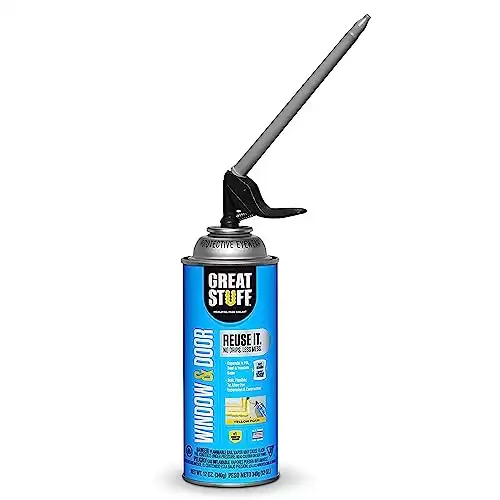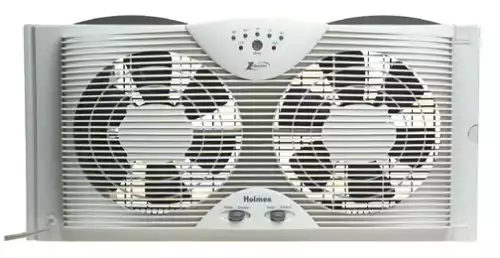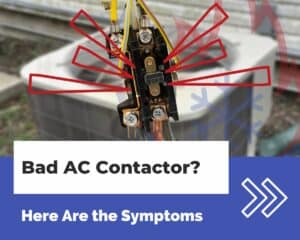HVAC Training Shop is reader-supported. As an Amazon Associate, I earn from qualifying purchases.
Are your AC vents sweating?
Hot, humid weather outside can sometimes cause your AC vents to drip moisture.
But why does that happen?
Sweaty AC vents are a complicated issue and can be caused by a myriad of factors.
And it’s not always due to muggy weather—an AC malfunction can also your vents to sweat.
In this article, I’ll explain the science behind AC vent condensation. I’ll also go over a few ways to keep your AC vents from sweating.
What causes AC vents to sweat?
AC vents sweat when their temperature is below the dew point temperature of the air in your home.
The root cause of sweaty AC vents is due to one (or both) of these things:
- The supply air coming out of your AC vent is too cold
- The humidity in your home is too high
For example, if the air coming out of your AC vents is 55°F, but the dew point of the air in your home is 60°F, then your AC vents will sweat.
So how do you know if the air in your AC vents is too cold or the dew point of your home’s air is too high?
It depends on the AC system in your home.
As a rule of thumb, the supply air in most central AC systems is around 55-60°F. So if the dew point of your home’s air is above that temperature, then it’s likely a humidity issue in your home that’s causing your AC vents to sweat.
However, a malfunction in your AC system can cause it to blow air that’s colder than normal. An AC that’s blowing ice-cold air sounds like a good thing—but it’s actually not.
If your AC is blowing air that’s too cold, your AC vents can sweat—even when the humidity in your home is low.
If you need help figuring out the dew point in your home, check out my dew point calculator at the bottom of the article.
Here’s a list of things that you should do if your home’s AC vents are sweating:
- Seal the air leaks in your home
- Remove excess moisture from your home
- Check for airflow issues in your HVAC system
Seal the air leaks in your home
If your AC vents are sweating, the first thing that you should do is check for air leaks in your home.
Humid air from the outside can infiltrate your home—bringing in moisture that condenses on your AC vents.
Here are a few possible sources of air leaks in your home:
- Windows
- Doors
- Spaces around air vents
Shut your windows
Shutting your windows is the first step to a home that’s sealed off from the outside.
Also, take a look at your windows to see if they are leaking air into your home. Old windows will sometimes wear out and lose their seal—letting in moist air from the outside.
Close your doors
The next thing that you should do is close all of the doors in your home that connect to an unconditioned space.
Unconditioned spaces are a source of excess moisture—especially in the humid summer months.
Close any doors that lead to unconditioned areas such as the outside, garage, or basement. You’ll want to isolate these areas from the conditioned spaces in your home to keep extra humidity out.
Seal the space around your air vents
Most people don’t know that the air vents themselves can be a source of moisture. Some air vents have a gap around them that lets in moist air from unconditioned spaces in their home.
If you remove your vent cover and see a gap between the metal duct and wall, then you’ll need to seal that gap to prevent moist air from getting into your home.
For small gaps, some aluminum foil tape usually works fine.
This scrim-backed aluminum foil tape is reinforced, so it won’t tear easily after its applied. This means that it will keep your ducts sealed for years to come.
For larger gaps, I recommend using a window sealant such as spray foam to seal the space around your air vents.
Just be careful not to overdo it—spray foam will rapidly expand, so you need less than you think.
This polyurethane expanding foam comes with a long applicator tip for reaching into narrow cracks—perfect for sealing the gaps around your air vents.
Remove excess moisture from your home
If your AC vents are sweating, it could be due to excess moisture in your home.
Humidity from your bathrooms and kitchen will contribute to condensation on your AC vents.
If you can remove the moisture from your kitchen and bathrooms before it becomes a problem, that will help immensely with sweaty AC vents.
Exhaust the moisture from your bathrooms
Bathrooms routinely generate excess moisture—especially during hot showers.
Using your bathroom exhaust fan during and after showering will help expel moisture that will otherwise condense on your AC vents.
If you don’t have an exhaust fan in your bathroom, a quick fix is to use a window exhaust fan to expel moisture during your showers.
This window exhaust fan slides right under your bathroom window. Once it’s installed, you’ll be able to exhaust your humid bathroom air quickly through the window.
Just be sure not to run your exhaust fan for more than it’s needed.
If you run your bathroom exhaust fan for long periods of time, it will slowly bring outside air into your home—creating another humidity problem.
Exhaust the moisture from your kitchen
Kitchens also generate large amounts of moisture—especially when cooking.
Using your kitchen exhaust hood while cooking will help remove moisture from your home’s air (as long as the exhaust hood vents to the outside of your home).
However, don’t run your kitchen exhaust hood for longer than it’s needed—or else you’ll bring in excess humid outside air into your home.
Check for airflow issues in your HVAC system
Another cause of sweaty AC vents is low airflow in your HVAC system.
When your AC’s airflow is low, the air gets colder than it should. This causes your AC vents to sweat since they are much colder than they should be.
Here are a few common fixes for low airflow in an HVAC system:
- Change your dirty air filter
- Open your air vents
- Check your HVAC system for air leaks
I’ll go over them below.
Change your dirty air filter
A dirty air filter will cause airflow restrictions in your HVAC system. This could cause your AC vents to sweat as your supply air temperature dips down below the dew point temperature in your home.
If your AC vents are sweating, changing your dirty air filter could remedy the issue.
Open your air vents
Closed or obstructed air vents will cause airflow restrictions in your HVAC system.
With less airflow through your AC coil, your supply air temperature could dip too low and cause your AC vents to sweat.
All of the air vents in your home need to be open and clear. This means that you need to keep obstructions such as furniture and curtains at least 1 foot away from any air vent.
Supply air vent registers usually have a lever on the side of them that’s used to direct airflow. Adjust the lever to provide a clear path for airflow.
One thing I should mention is that you should not isolate conditioned spaces such as bedrooms from your home’s HVAC system.
Some people like to close off unused bedrooms in their homes so they don’t need to spend extra money to cool that space. That’s almost always a bad idea since your AC system was likely designed to cool your entire home—not just part of it.
Closing off conditioned areas can cause your AC to short cycle. A short cycling AC can lead to humidity issues since your AC doesn’t run long enough to dehumidify your home’s air.
Check your HVAC system for air leaks
Another thing to check is if your HVAC system has air leaks in it.
Inspect your air handler and ductwork for seams or holes leaking out air.
Be sure to pay close attention to the connection points—where the air handler connects to the ductwork, or where one piece of ductwork connects to another. Air leaks are commonly found at these connection points.
Flex duct is another thing to look out for. Flex duct can become kinked or damaged quite easily. If your home has flex ducts, take some time to ensure that they’re not kinked, damaged, or imploded.
If you find air leaks in your HVAC system, you may be able to fix them yourself. For small seams and holes, aluminum foil tape will usually do the trick.
If you have a large issue such as a broken or imploded duct, then you’ll need to call an HVAC professional.






